The Dalmatian Club of America
Health Survey Results
Health Related Conditions
Four out of five Dalmatians are black and white in color; the other 20% are liver and white in color.
Seven percent of Dalmatians in the survey were patched and 78% had two brown eyes.
Figure 27 - Dalmatian Coat Colors

13% of Dalmatians in the survey were either partially or totally deaf.
Data based on 763 dogs.
Figure 28 - Dalmatian Hearing Characteristics

The average Dalmatian lives to be 9.8 years of age, female dogs live slightly longer 9.9 years.
Data based on 187 deceased dogs. 91 male dogs and 96 female dogs.
Figure 29 - Age at Death by Gender

Dalmatians who were bred, on average live 1.5 years longer than dogs that were not bred or 11.3 years compared with 9.8 years respectively.
Data based on 78 dogs.
Figure 30 - Average Age at Death for Breeding Dogs

Performance Dalmatians on average lived longer than other Dalmatians (61%) lived to between 11-15 years of age compared with 48% of companion/ pet Dalmatians.
Data based on 187 deceased dogs.
Figure 31 - Age at Death by Owners Primary Interest in Owning a Dalmatian

Dalmatians who are primarily housed in a crate in the house during the day died at an early age than other Dalmatians. 48% of these dogs died before they were six years of age.
Data based on 187 deceased dogs.
Figure 32 - Age at Death by Primary Housing of Dalmatian During the Day

11% of female dogs living with other female dogs died before their second birthday compared with 0% of male dogs under the age of two living with other male dogs.
Data based on 187 deceased dogs. 91 male dogs and 96 female dogs.
Figure 33 - Age at Death for Dog Lives with Others Dogs of the Same Sex

Dalmatian who lived on a diet of dry and home-prepared foods lived 1.7 years longer than the average Dalmatian regardless of diet. Dogs who lived on a diet of dry food only lived 0.1 years less than the average.
Data based on 185 deceased dogs.
Table 34 - Age at Death for Three Most Common Diets
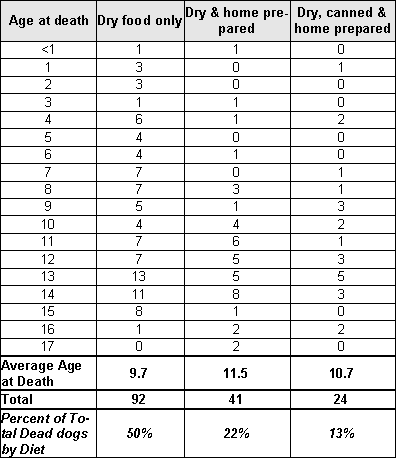
Heartworm medicine was the most often listed medicine Dalmatians were taking according to their owners (45%).
Data based on 153 owners providing responses for 301 dogs.
Table 35 – List of Medicines
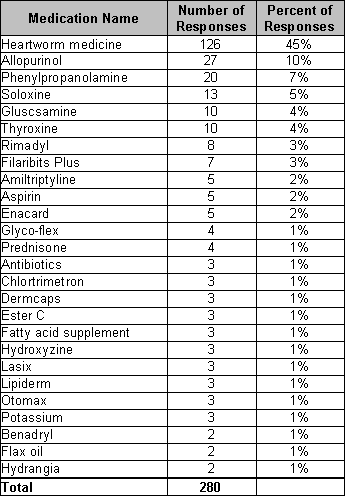
Note: 27 times a medicine was mentioned only once and therefore is not included in table 35.
There were 14 major disease categories from which survey respondents were to list their dog(s) illnesses. Table 36 lists these disease categories in descending order with skin being the common disease category mentioned at 24% of all responses for which diseases were listed.
Note: owners were permitted to enter the same disease category more than one time per dog if that dog had had the disease or health condition more than once in their lifetime.
Data based on 513 dogs having one or more disease listed for them.
Table 36 - Major Disease Categories
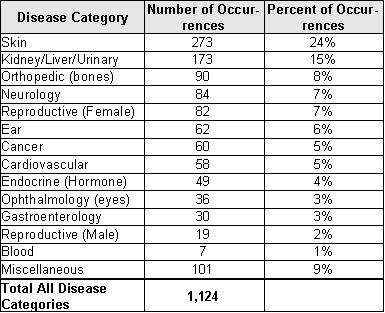
Table 37 lists the top five major disease categories and the actual number of dogs from the survey with those diseases.
Data based on 513 dogs.
Table 37 – Actual Number of Dogs with the Top Five Major Disease Categories
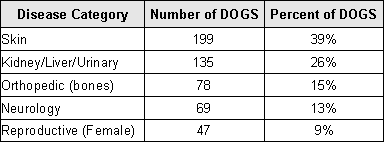
36 of the 111 dogs with cause of death coded died from kidney/liver/urinary health-related conditions.
Data based on 111 dogs with cause of death coded.
Note: data for cause of death was reported at the major disease category level, as the numbers of responses at the specific disease code level were too small to report to be meaningful.
Table 38 – Cause of Death by Major Disease Category
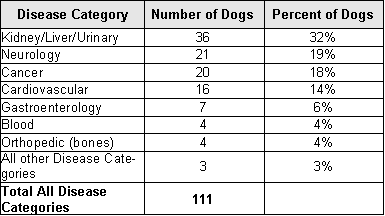
NOTE: only major disease categories with 3 or more responses are included in table 38.
Table 39 summarizes the age at which Dalmatians developed diseases in the 14 major diseases categories. Figures 40, 41 and 42 graphically depict the age of disease onset for skin, kidney/liver/urinary and orthopedic (bones) categories.
Note: owners were permitted to enter the same disease category more than one time per dog if that dog had had the disease or health condition more than once in their lifetime.
Data based on 513 dogs having one or more disease listed for them.
Table 39 - Major Disease Categories by Age Group
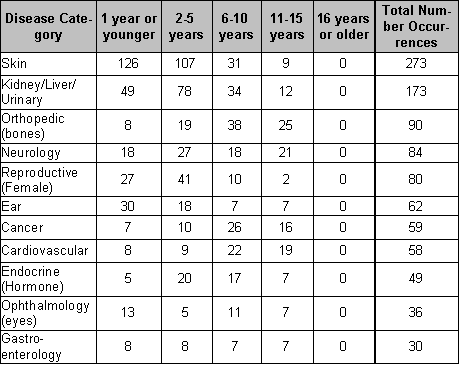
NOTE: only disease categories with 20 or more responses are listed in table39.
46% of Dalmatians with skin problems develop those problems when they are one-year of age or younger.
Data based on 273 dogs.
Figure 40 - Age at Onset of Skin Problems

45% of Dalmatians with kidney/liver/urinary problems develop those problems when they are between 2-5 years of age.
Data based on 173 dogs.
Figure 41 - Age at Onset of Kidney/Liver/Urinary Problems

42% of Dalmatians with orthopedic (bones) problems develop those problems when they are between 6-10 years of age.
Data based on 90 dogs.
Figure 42 – Age at Onset of Orthopedic (bones) Problems

There were 174 disease codes grouped into 14 major disease categories from which survey respondents were to list their dog(s) illnesses. Table 43 lists the 16 disease codes with 20 or more responses. The most common response was allergies code 301 with 100 responses (9%).
Data based on 513 dogs having one or more disease listed for them.
Table 43 – Most Common Disease Codes
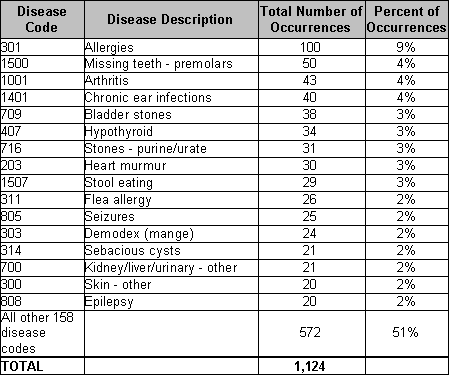
NOTE: only disease codes with 20 or more responses are included in table43.
Table 44 summarizes the age at which Dalmatians developed diseases from the 174 disease codes. Figures 44 and 45 graphically depict the age of disease onset for allergies and arthritis.
Data based on 513 dogs having one or more disease listed for them.
Table 44 – Most Common Disease Codes by Age Group
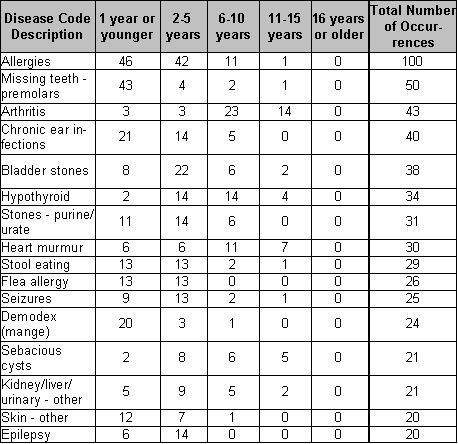
NOTE: only disease codes with 20 or more responses are included in table44.
46% of Dalmatians with allergy problems develop those problems when they are one year of age or younger.
Data based on 100 dogs.
Figure 45 - Age at Onset of Allergies

53% of Dalmatians develop arthritis between 6-10 years of age.
Data based on 43 dogs.
Figure 46 – Age at Onset of Arthritis

|